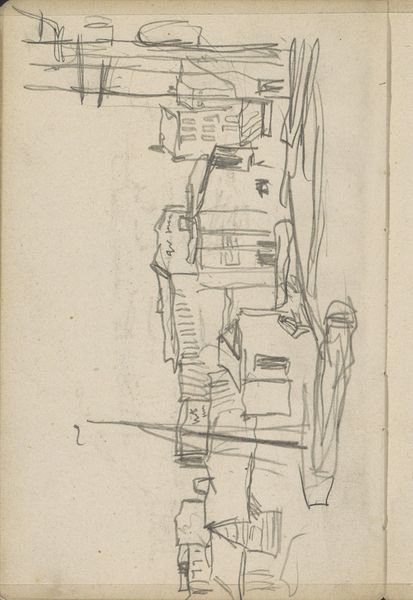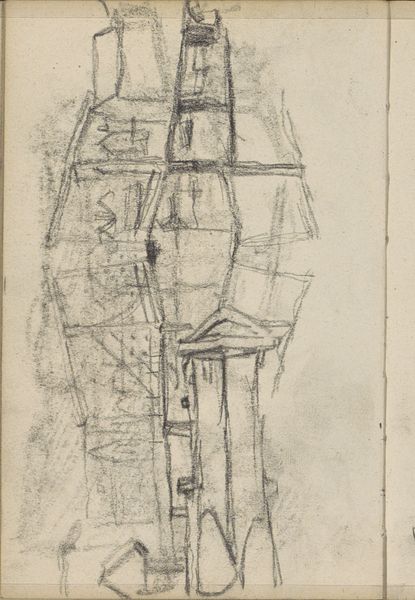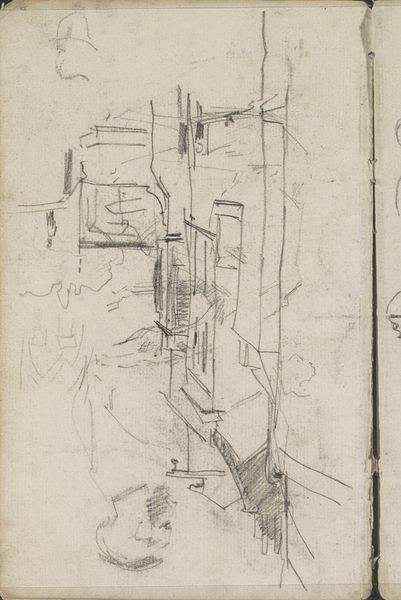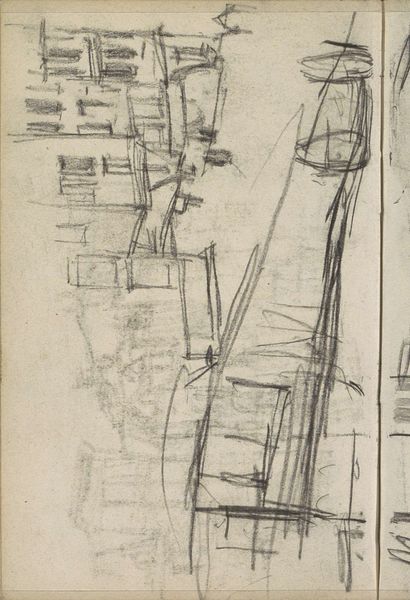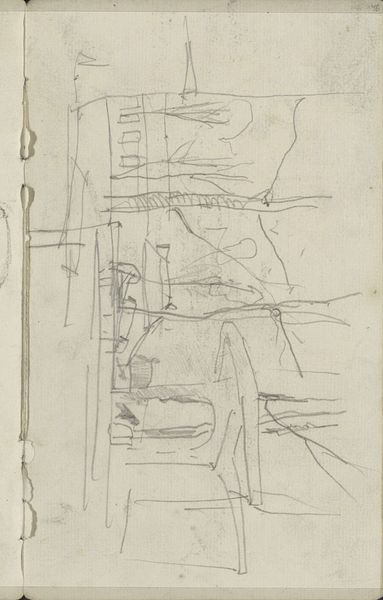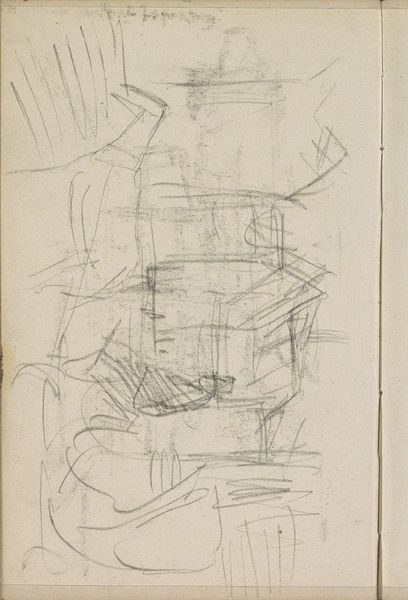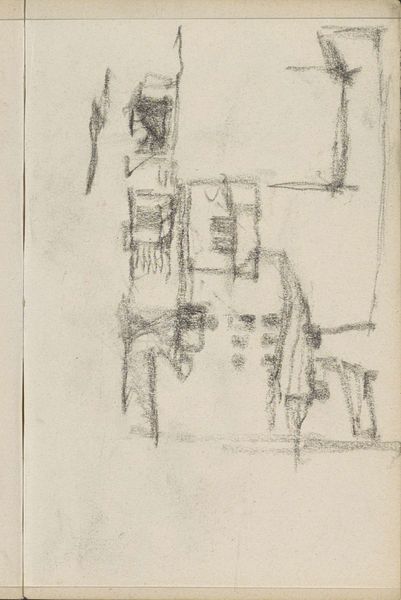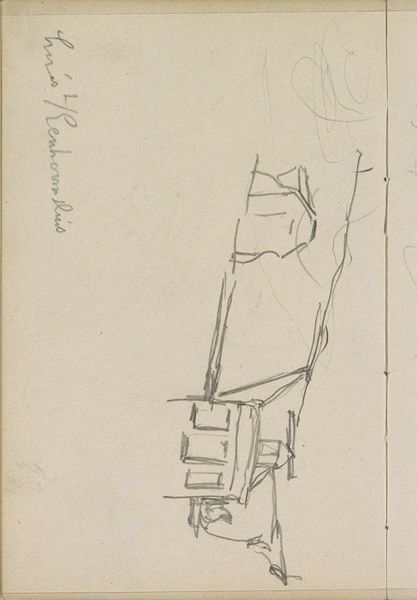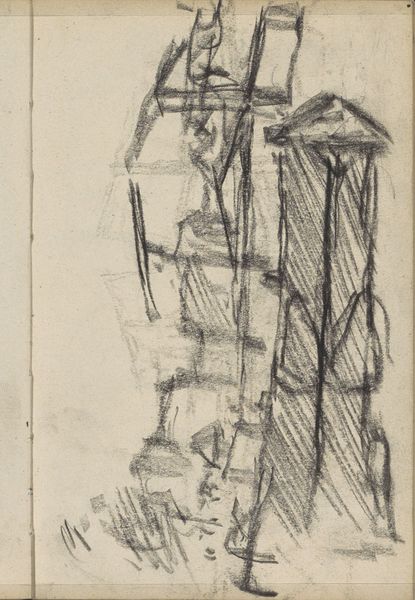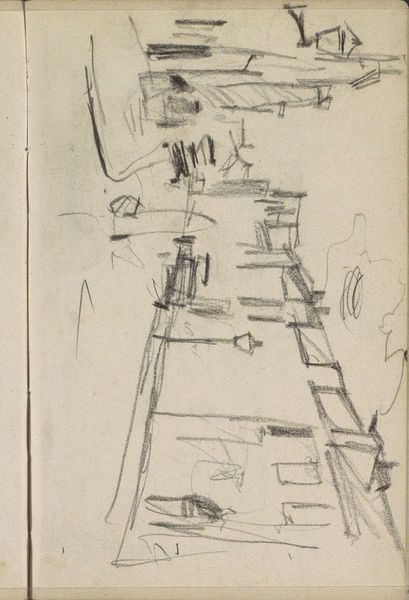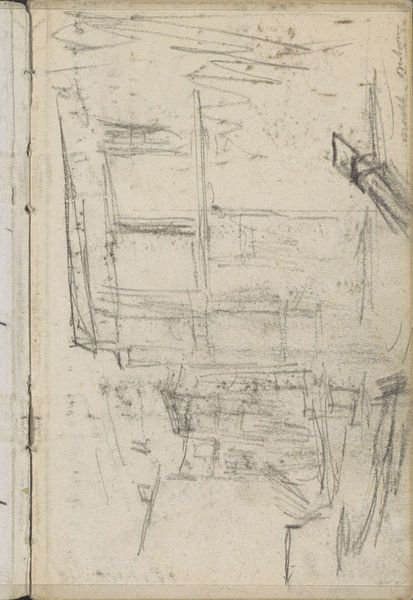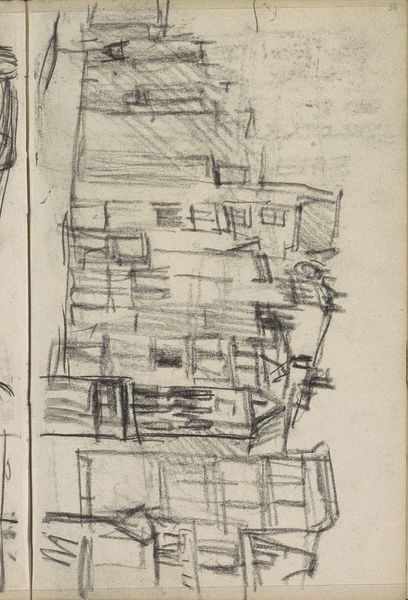
Copyright: Rijks Museum: Open Domain
Editor: This pencil drawing, "Rijtuig, mogelijk op het Damrak in Amsterdam" by George Hendrik Breitner, dating from around 1900 to 1923, presents a somewhat distorted view. What catches my eye is how the carriage wheels appear so prominent against the fragmented buildings. How do you interpret this work? Curator: It strikes me as a study of immediacy. Breitner, rooted in Impressionism, seems less concerned with precise architectural detail and more with capturing the raw energy of the city. Look at the wheels, almost looming— they aren't simply part of a carriage, they symbolize movement, the relentless pulse of urban life. Editor: So the distorted buildings…they aren't necessarily flaws? Curator: Precisely! Consider what Amsterdam, especially the Damrak, represented then: a burgeoning center of commerce, a constant flux of people and goods. The seemingly chaotic lines mirror that dynamic energy. It’s as though the city itself is in motion, almost overwhelming the observer. Editor: That makes me think about how the Damrak was changing so rapidly then, with new construction. Was he capturing a fleeting moment? Curator: I believe so. Breitner documented Amsterdam like few others. There's a melancholic beauty in these almost unfinished sketches; it’s a snapshot of a city on the brink of modernity, a poignant meditation on progress and memory. He gives an undercurrent of the ephemeral in this very solid urban scene. Don’t you think? Editor: I do. It’s less about the specifics of a place, and more about the feeling of a place, how it transforms and lingers in memory. Curator: Exactly! And in this piece, he immortalizes not just a cityscape, but a specific emotional encounter with a transforming world.
Comments
No comments
Be the first to comment and join the conversation on the ultimate creative platform.

